
Matra were always a special kind of car company. Often years ahead of the competition with technology, they were maybe a little too far ahead at times. Whilst Matra might be best associated with their short but glorious run of racing success, achieved as the 1960s came to a close and the ’70s dawned, there’s also a parallel stream of street machines to investigate – and an unexpected 40 years of history at that.
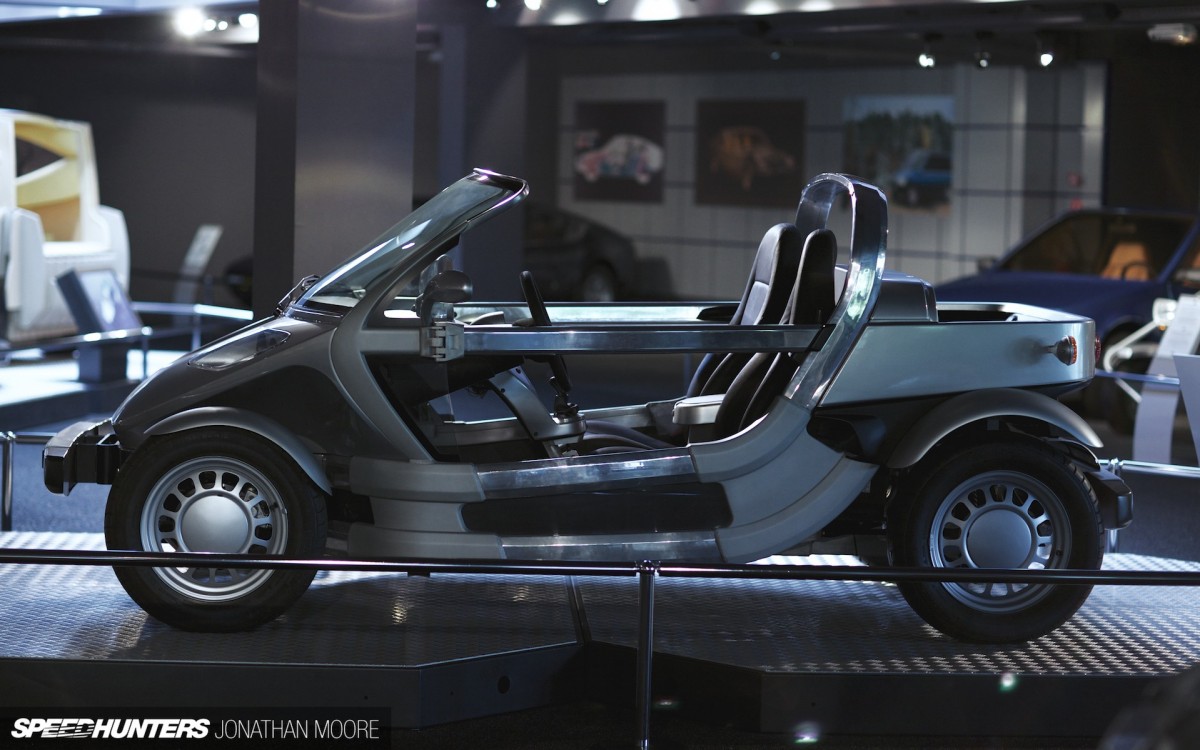
At the Musée Automobiles Matra at Romorantin, the counterpoint to lines of beautiful, proudly blue single seaters and sports cars was a line-up of out-there street cars, prototypes and concepts that showed Matra to always be on the cutting edge. Even as their own sports car range died a death and their Renault partnership stripped away some of their individuality, they were actually still industriously working away in the background on what could be the next big thing. Matra never shouted loudly. But when they spoke, people really should have listened.
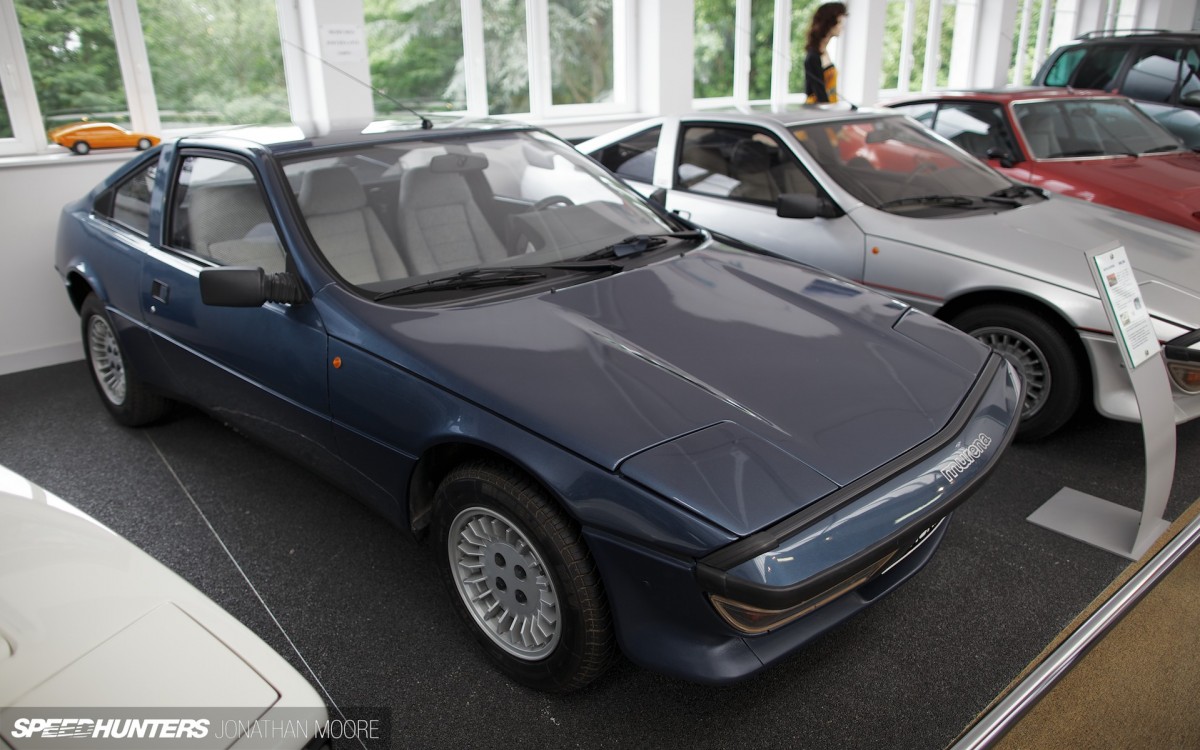
My love of Matra is mostly down to family holidays in France as a child, hoovering up Majorette toy cars at every opportunity. My favourites were the Matras and Alpines: at the time they looked up there with Ferraris and Porsches, and I think they still do. Underrated? Definitely.
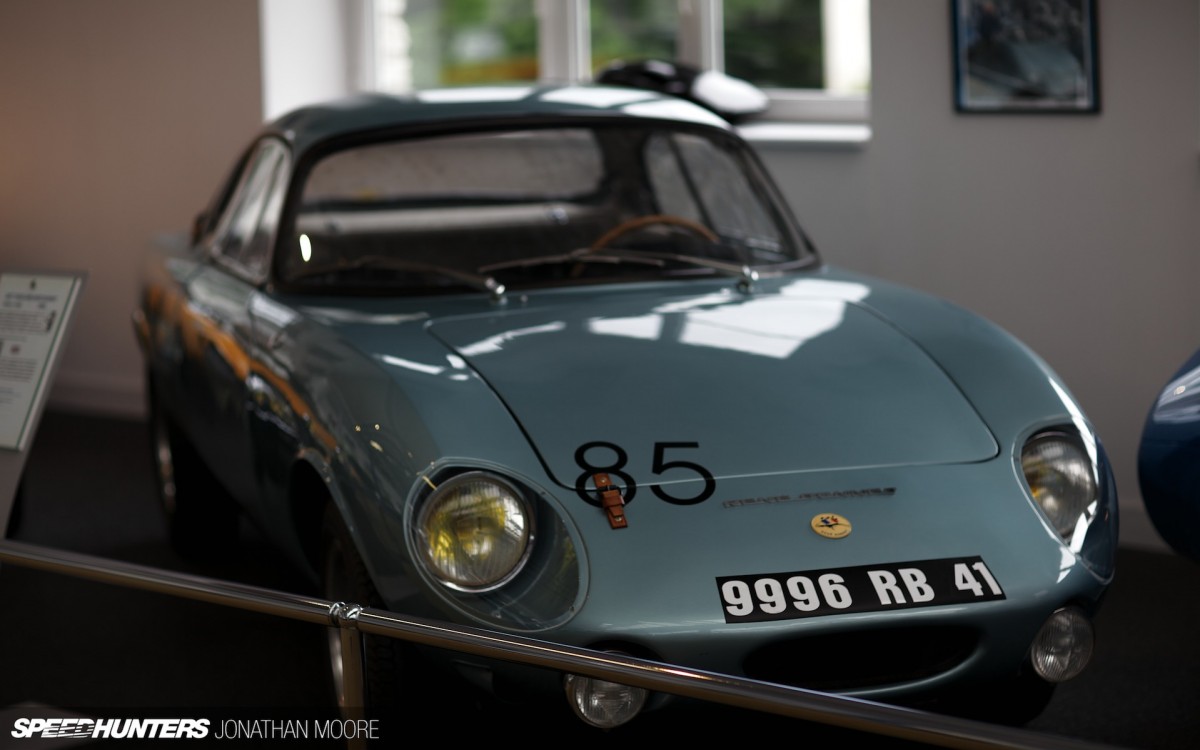
Matra’s automotive story began back in the early 1960s, with a toe-in-the-water collaboration in the production of the Deutsch-Bonnet Djet. It was one of the first ever mid-engined road cars, featuring a super lightweight body: features that would be signatures for Matra sports cars for 20 years.
Going back to the beginning, we start with a racing version of the Djet. It was quite a pretty little car – almost Elan like from some angles. This particular model was the Djet Tubulaire, referencing the tubeframe chassis developed for competing in the 1963 Nürburgring 1,000km. The weight? A featherlight 544kg, allowing a top speed of 200kph from the diminutive 1,000cc Gordini motor mounted behind the seats.

Matra branding was added for the subtly renamed Jet 6 that followed after the Matra buy-out of DB, whose lineage was direct from the Djet in more than just name. This car was actually made for the Matra owner’s son.
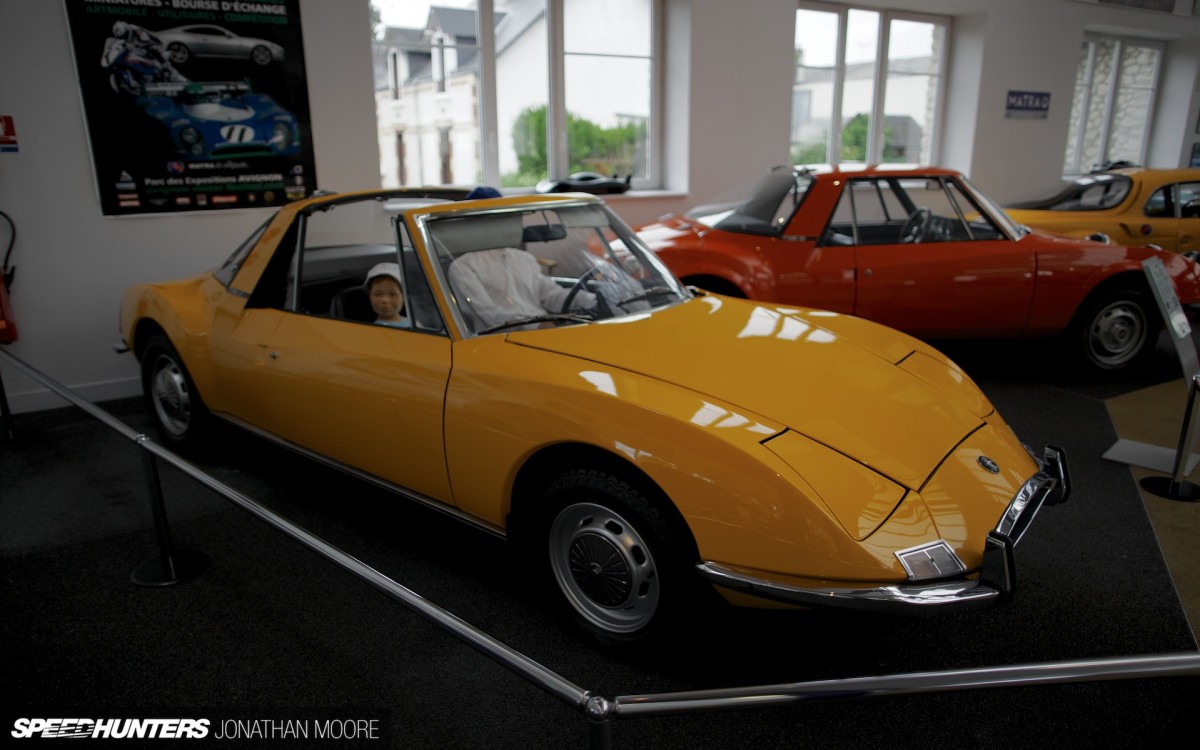
The quirky M530 of 1967 was next up, and is considered the first Matra proper. With its mid-rear layout, sub-ton weight and 1.7-litre Ford engine, handling made up for its polarising looks; then there were the pop-up headlights, F3-derived suspension, disk brakes and targa top. I came across a whole phalanx of these at the Montlhery Heritage Festival back in June – almost 10,000 were built, so a more than healthy number for a first car.
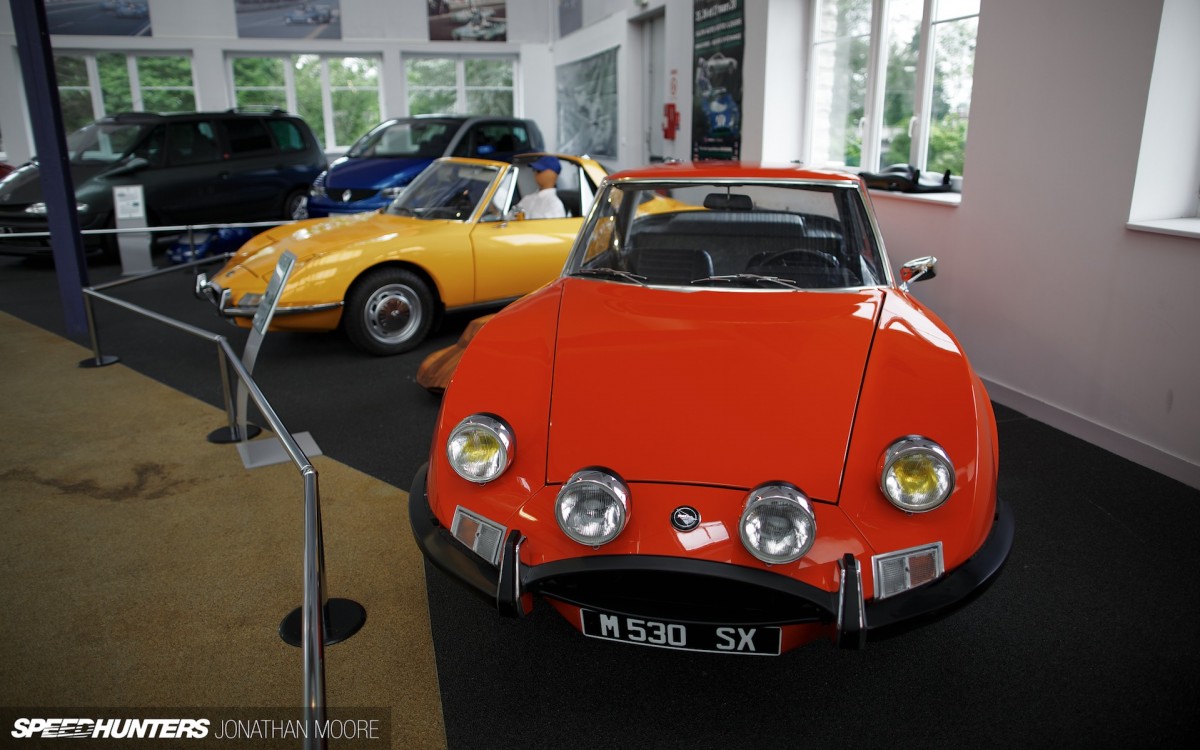
A budget model followed, the SX, which ditched the more luxurious things like the T-top, chrome and pop-up lights. For customers, it was important to fill in the correct prefix at the Matra dealer: asking for an R530 could lead to one of Matra’s missile systems turning up, and a lot of awkward questions…
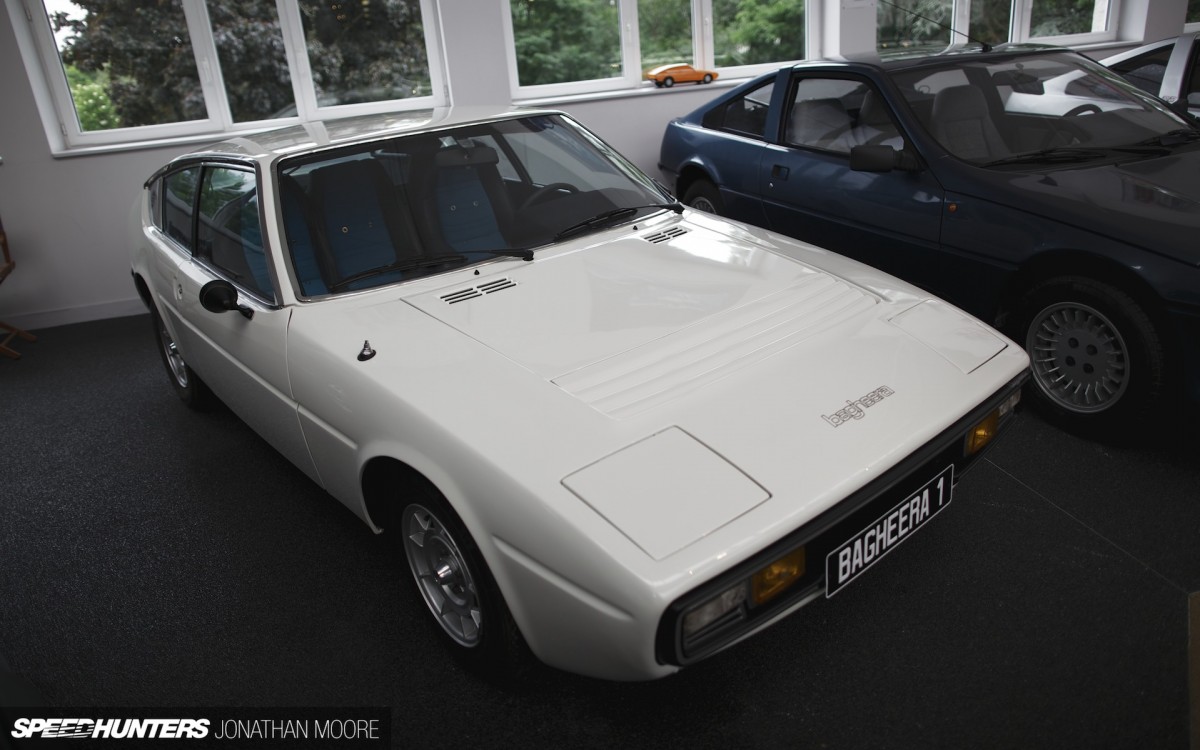
Production of the M530 model continued in the background as a pretty successful programme whilst the racing division concentrated on snatching a Formula One championship and the trio of Le Mans 24 Hours victories. With the racing boxes ticked, Matra’s focus returned to the road car division and their Simca partnership. The car that emerged in 1973 couldn’t have been more different: the Bagheera.
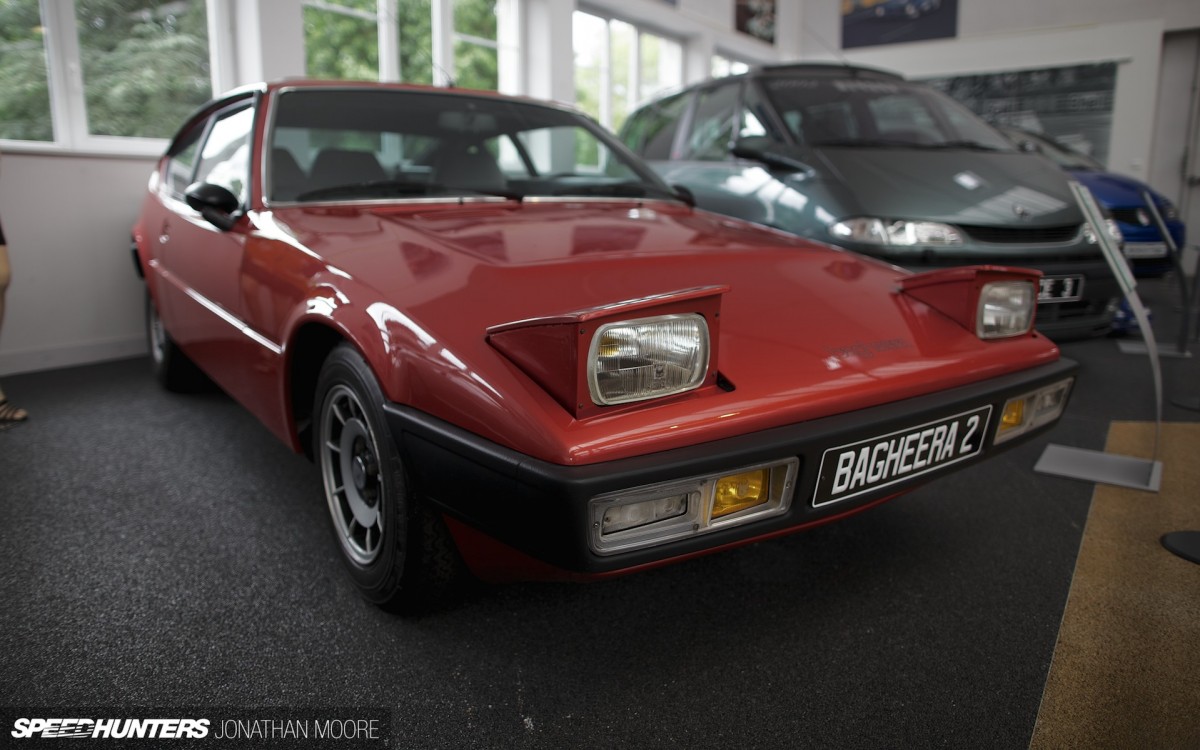
Its sleek, Italianate wedge style was matched with light weight, but the car was let down by an underpowered engine taken straight from the Simca range – as many components were. The first variant looked great but in proper European tradition had mostly rotted away as soon as you drove it off the forecourt. The Bagheera 2 improved power and reliability, but the steel body was still its weak point. 50,000 would be made in its eight year production run, though not many survive intact because of the manufacturing issues.

In ’77 Matra again went off in an unexpected direction with the Rancho. Okay, it wasn’t actually four-wheel drive, but I still think this has the looks, if not capability, of the Land Rover Discovery – a car it predates by a decade.
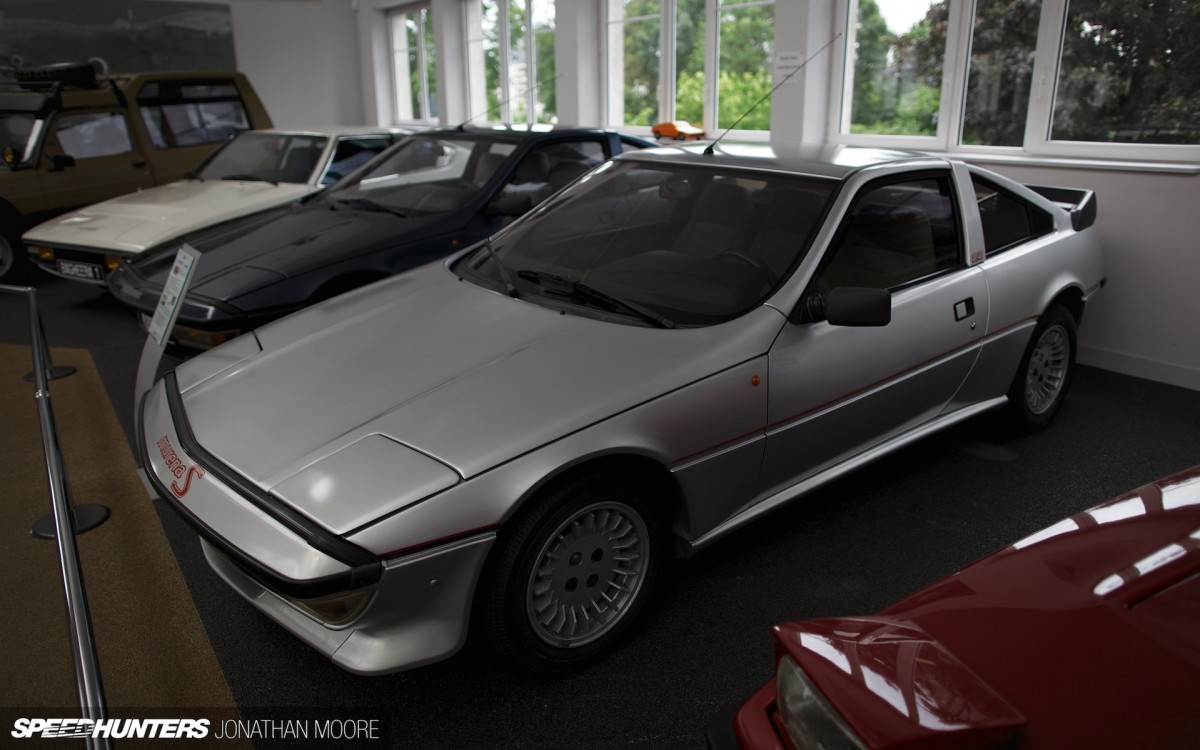
The even more compact Murena replaced the Bagheera in 1980 as part of the relationship with Peugeot: I think it has MR2-like style potential, a car it beats by four years. Much improved power now matched up to the handling potential, and the tubs were zinc-galvanised to prevent corrosion. Rust and European cars of the ’70s (and ’80s if I’m honest) are still a painful memory…
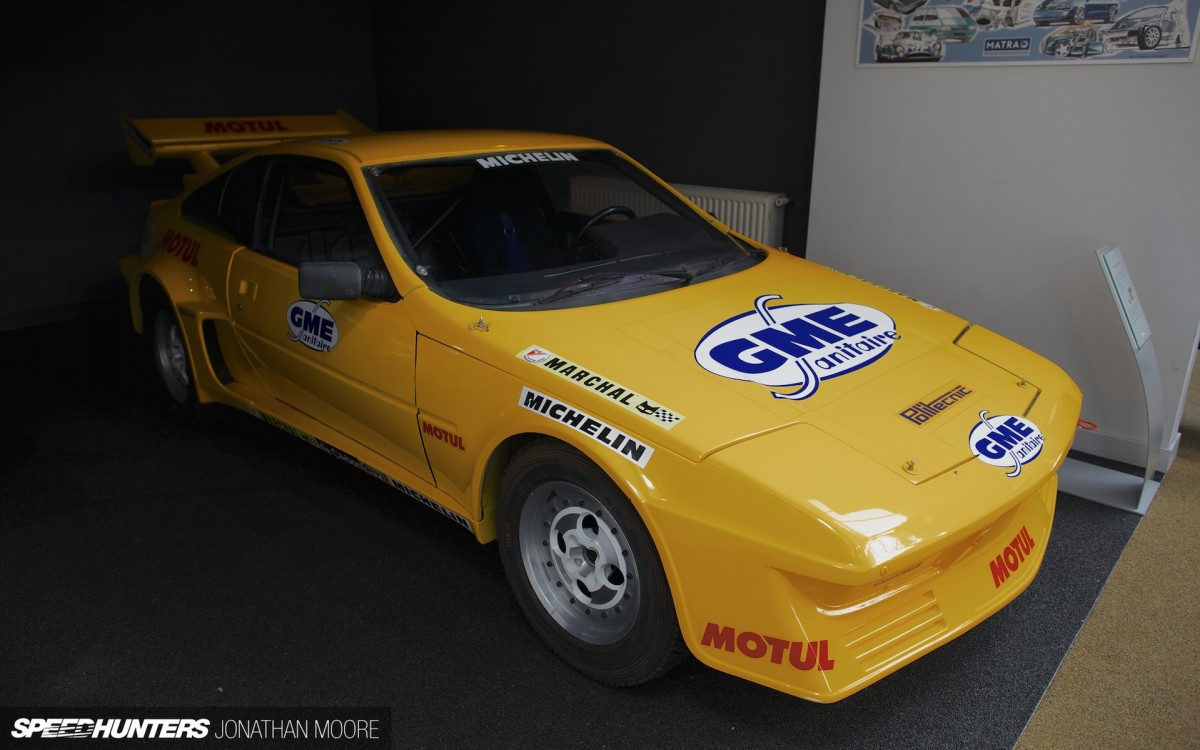
Mainstream motorsport might have been off the agenda, but there was one more programme that surfaced. Matra took the Murena into rallycross in 1981 and ’82. It was no lemon either – but then, it was a Matra. The Murena Polytechnic took the French title in ’82.
Espace arms race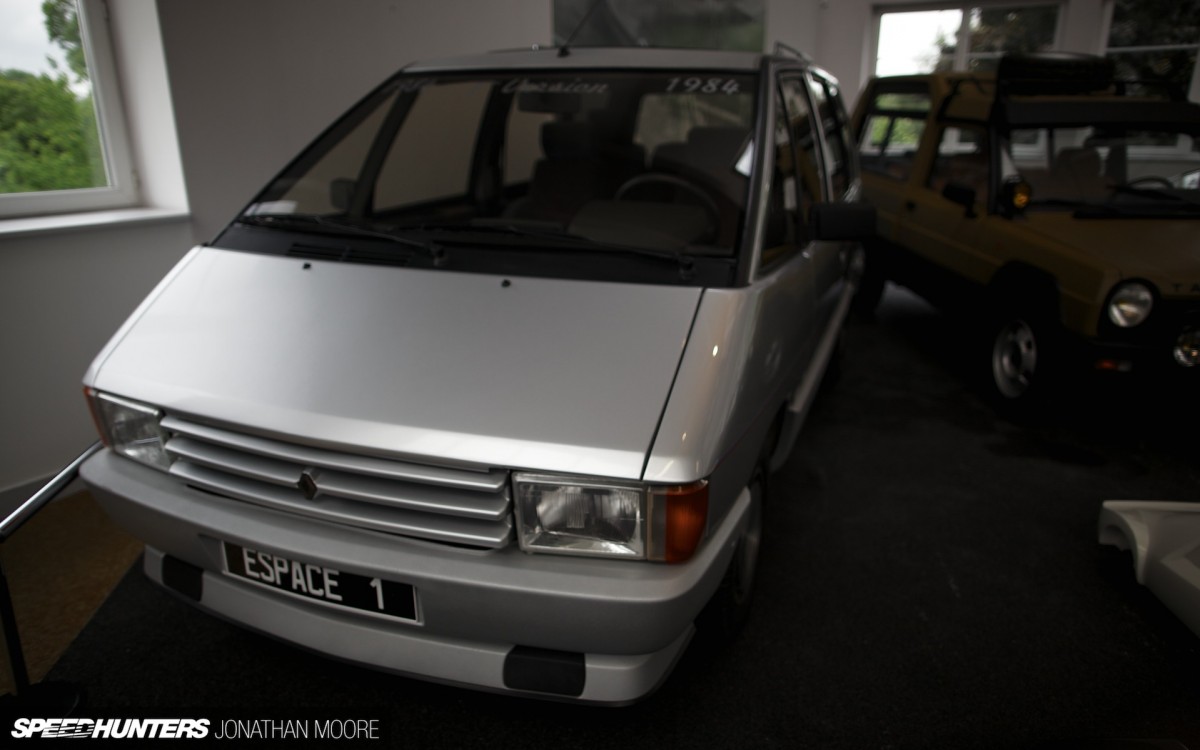
And then there’s the Espace. Matra’s prototype for the vehicle that would introduce the MPV segment to the world was given a polite ‘non’ by Peugeot when it was offered to them in the late ’70s. There must have been some serious face-palming when Renault took it up a half a dozen years later and sold the best part of a million units over the next three decades…
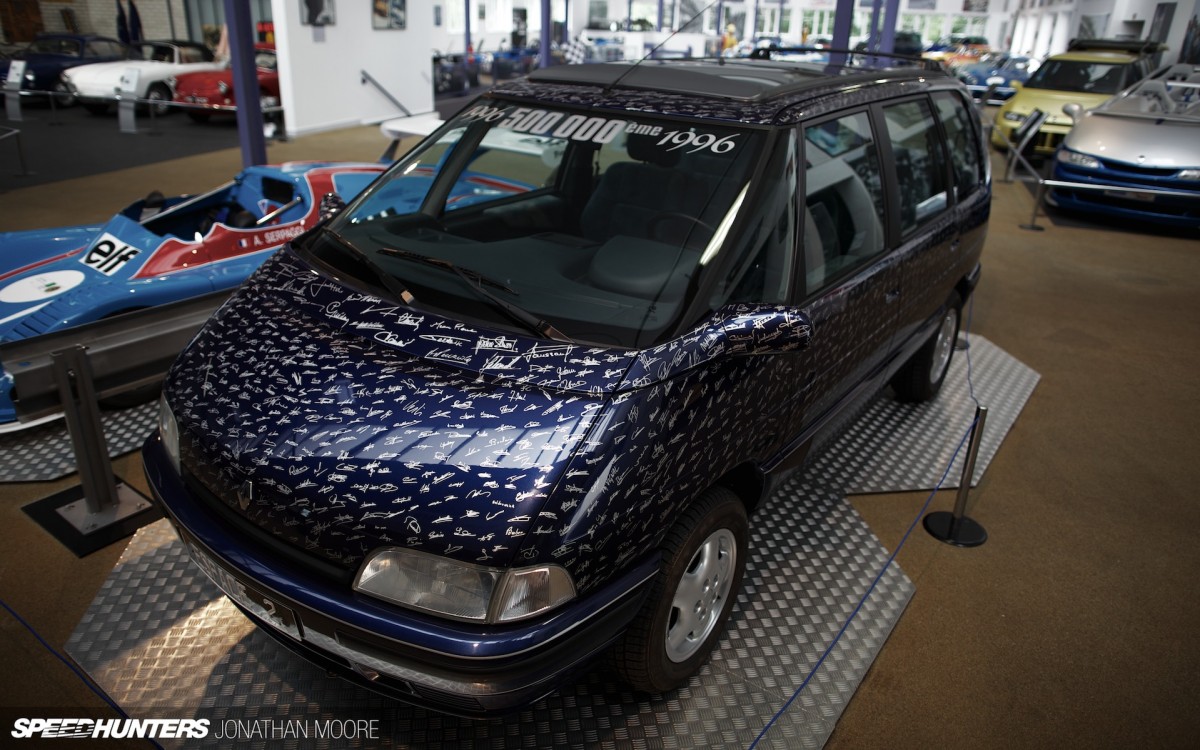
With Renault’s backing for the Espace from 1983 (making up for the commercial failure of the Murena), Matra’s Romorantin factory reverberated to the sound of industrial-scale production.

This particular model celebrated the 500,000th Espace to roll off the line and was signed by Matra workers and key people in the team’s history, including many of their famous drivers: Jackie Stewart and Jean-Pierre Jassaud are clear here.
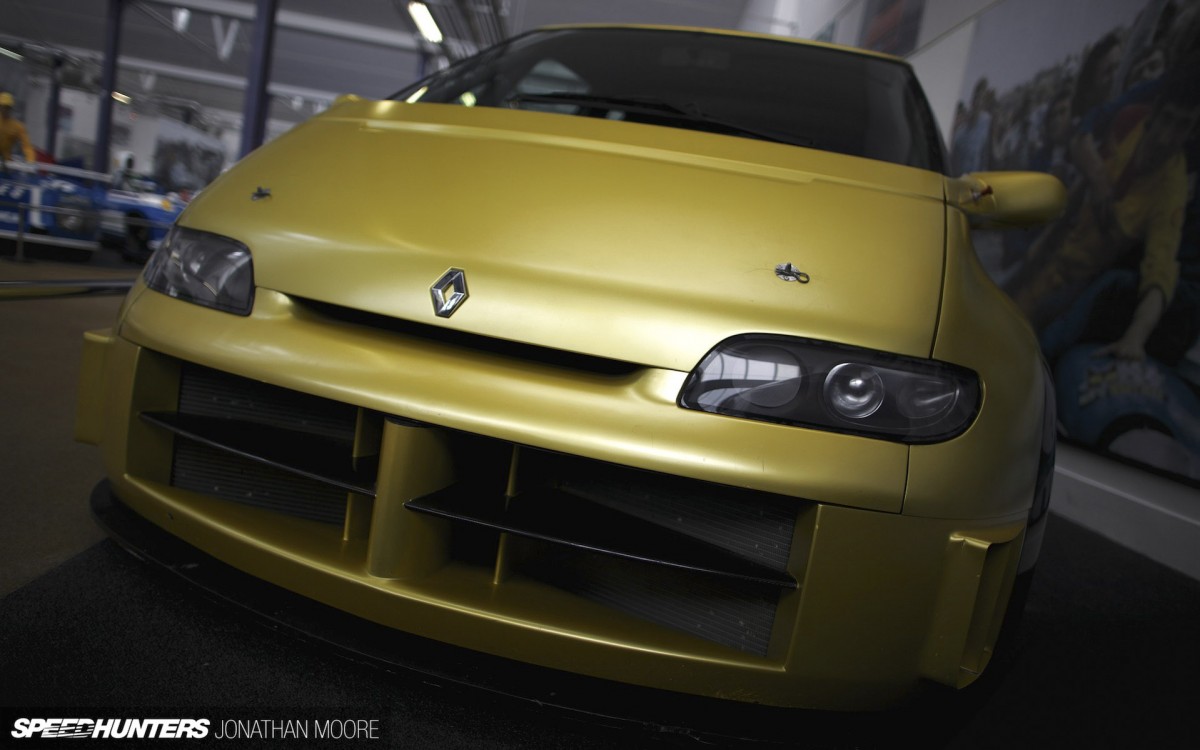
Espaces might be ten a penny, but there’s one that particularly stands out. Or sits down. Low. 1994’s Espace F1 was more the latter than the former, under the body at least.
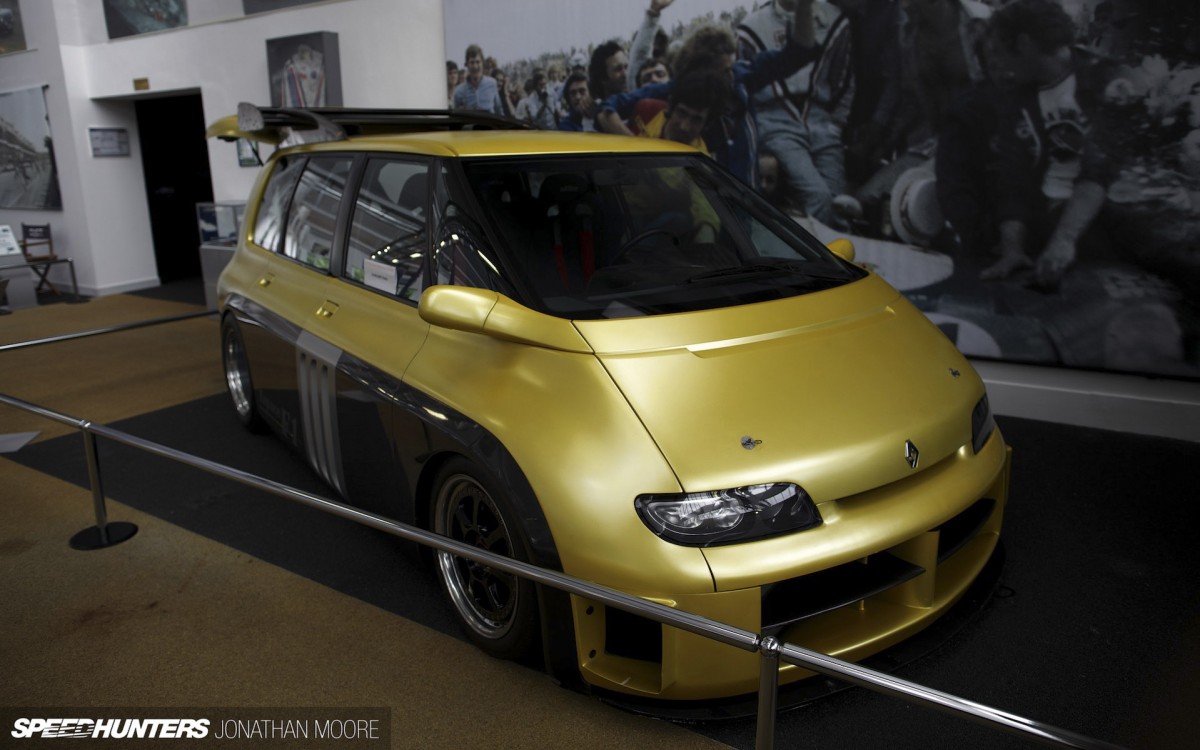
On the outside, a fattened up silhouette of an Espace J63 using carbon panels.
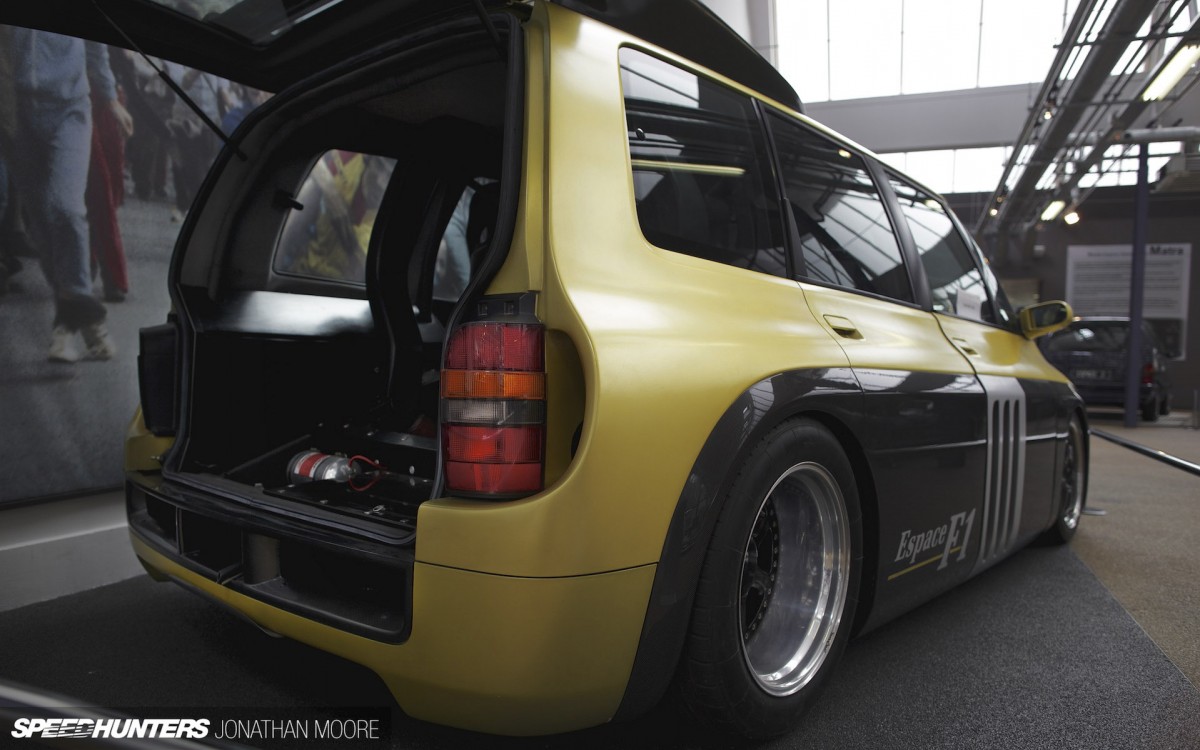
On the inside, its chassis was based on F1 technology and the 3.5-litre V10 engine was lifted from the Williams FW15C that had taken Alain Prost to the ’93 F1 title.
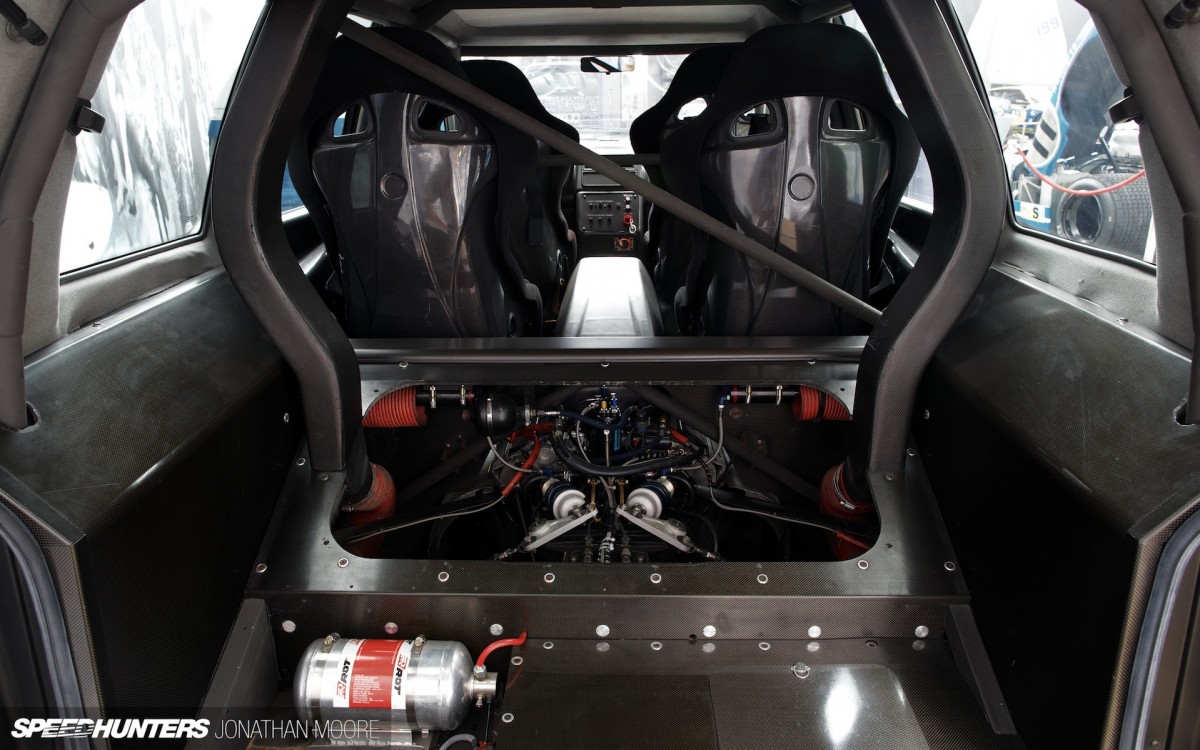
And it still had four seats. And space for shopping. As long as you didn’t mind it getting a bit warm.
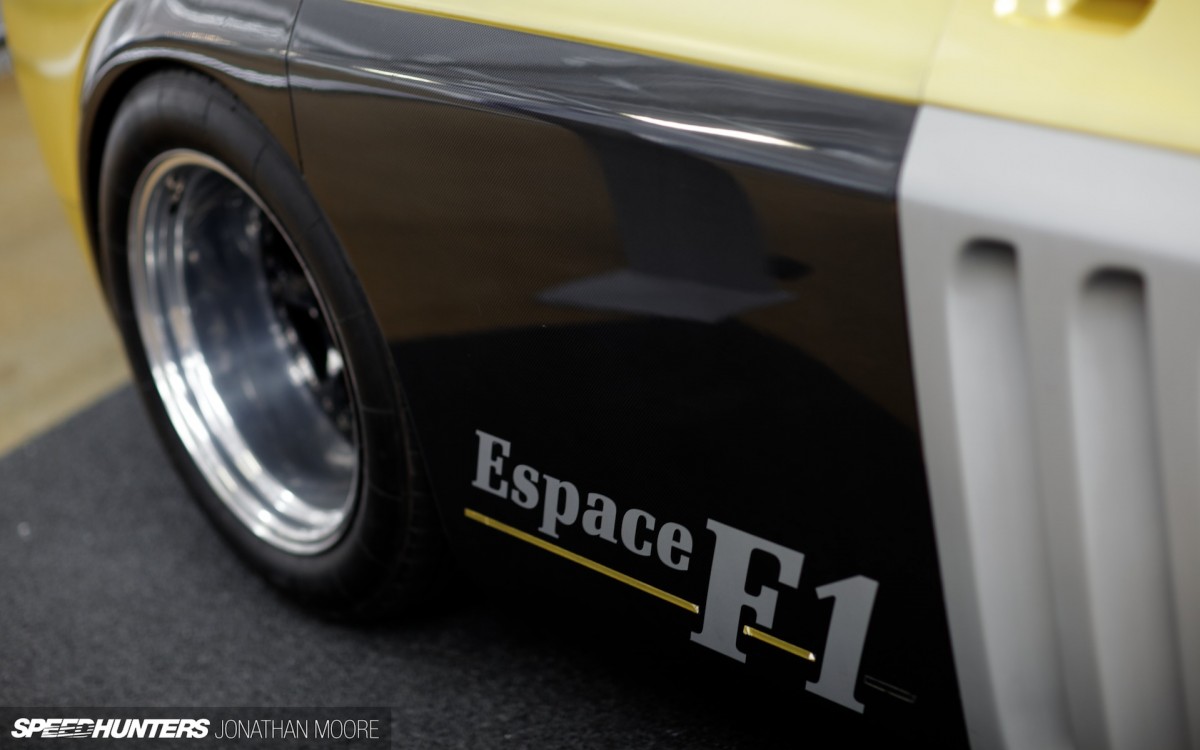
The frontage might have looked bluff, but then you see all the aero going on: enormous ducting on the front and sides and a substantial wing on the rear helped keep the thing on the relative straight and narrow. Which it needed to be: Renault Sport upped the power of the V10, just to be sure, to over 800hp. It wasn’t just the 200mph top speed that was impressive, but the face-melting deceleration courtesy of the carbon ceramic brakes.
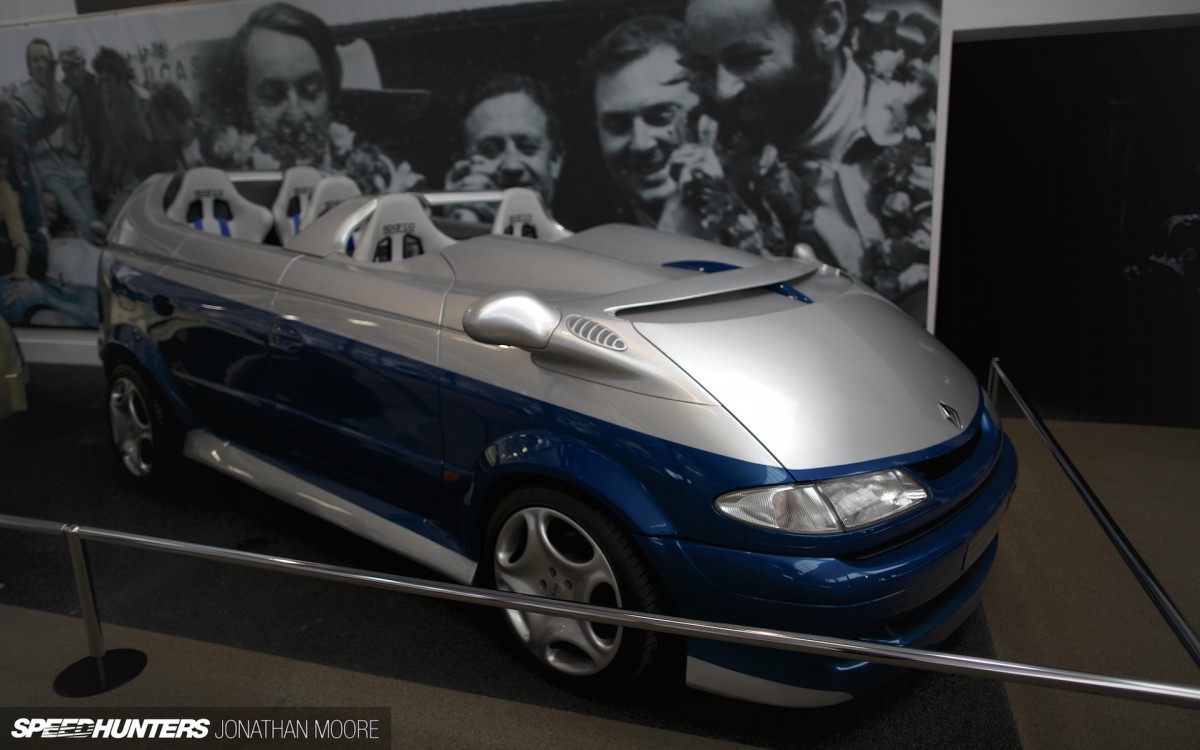
Not quite as extreme, but definitely just as mad, was the Espider Étude from 1998: a five-seater chop-top Espace, produced in collaboration with the Sbarro design school.
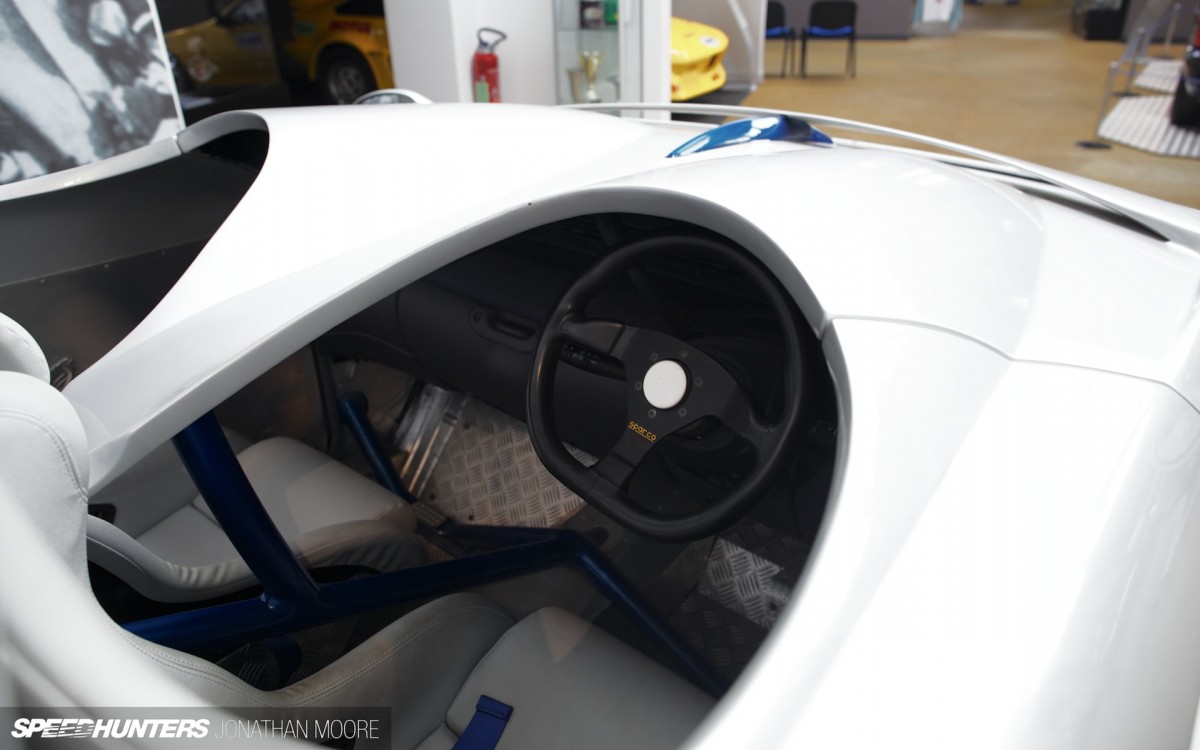
It was demonstrated ahead of the start of that year’s Le Mans 24 Hours. Sadly, the extreme styling wasn’t backed up by anything as powerful as the Espace F1: Renault’s new V6 was tucked away up front, delivering a sensible 200hp.
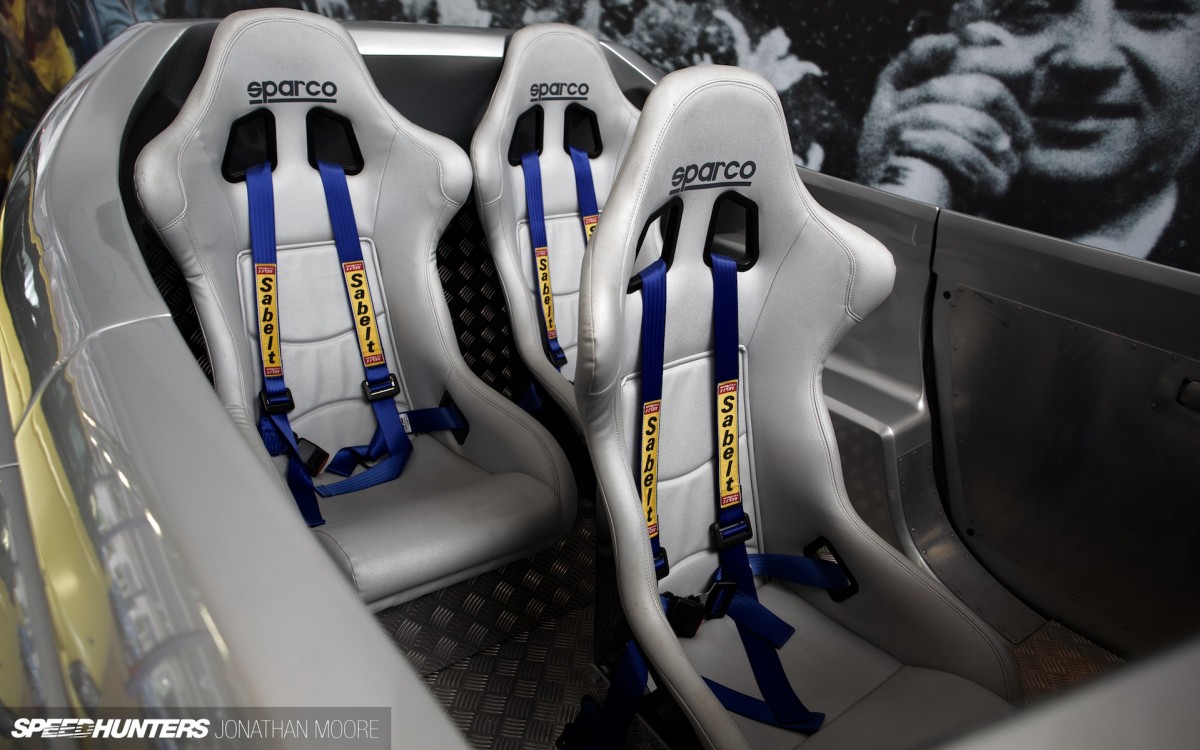
However, I’m not sure that would have made sitting in one of these exposed seats feel any safer…
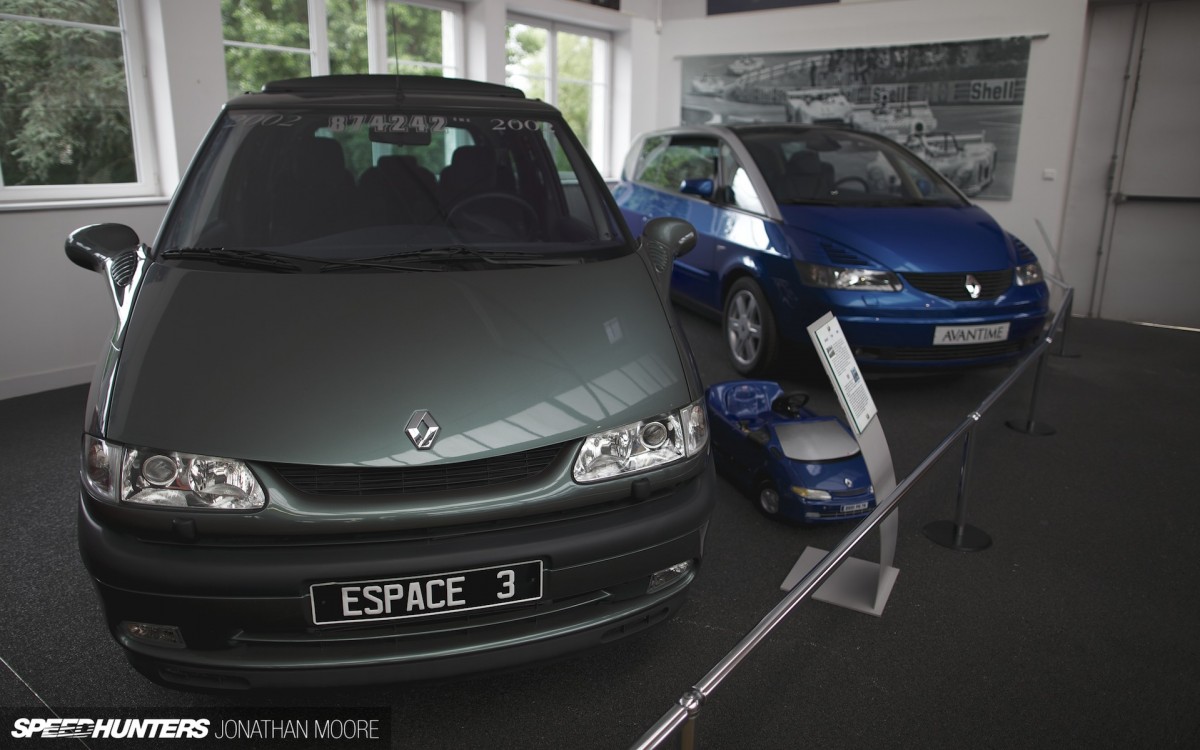
Completing the story, the short-lived avant garde Avantime MPV also came from the Matra stable, made between 2001 and 2003 – which was also the year Matra’s production of the Espace came to an end.
The Matra skunkworks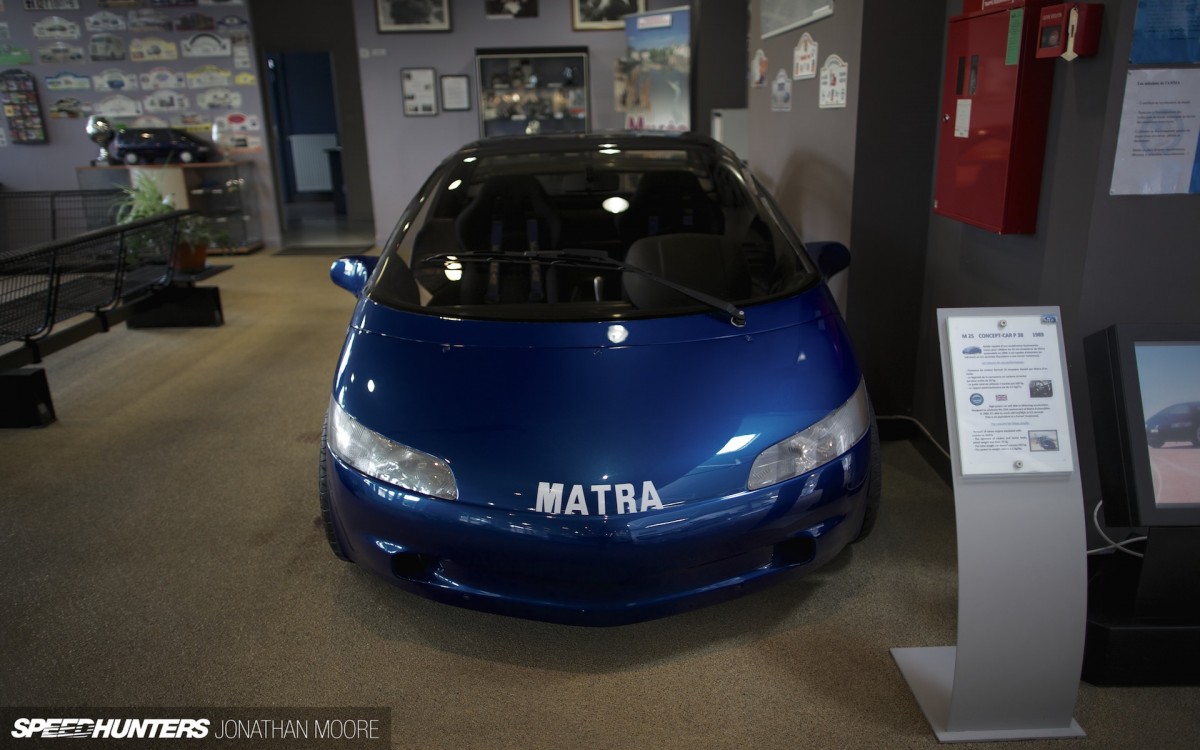
With the Espace production ticking away, you could be forgiven for thinking that in the ’80s and ’90s Matra settled back on their corporate deal with Renault and let the Euros roll in. But Matra weren’t that kind of company.
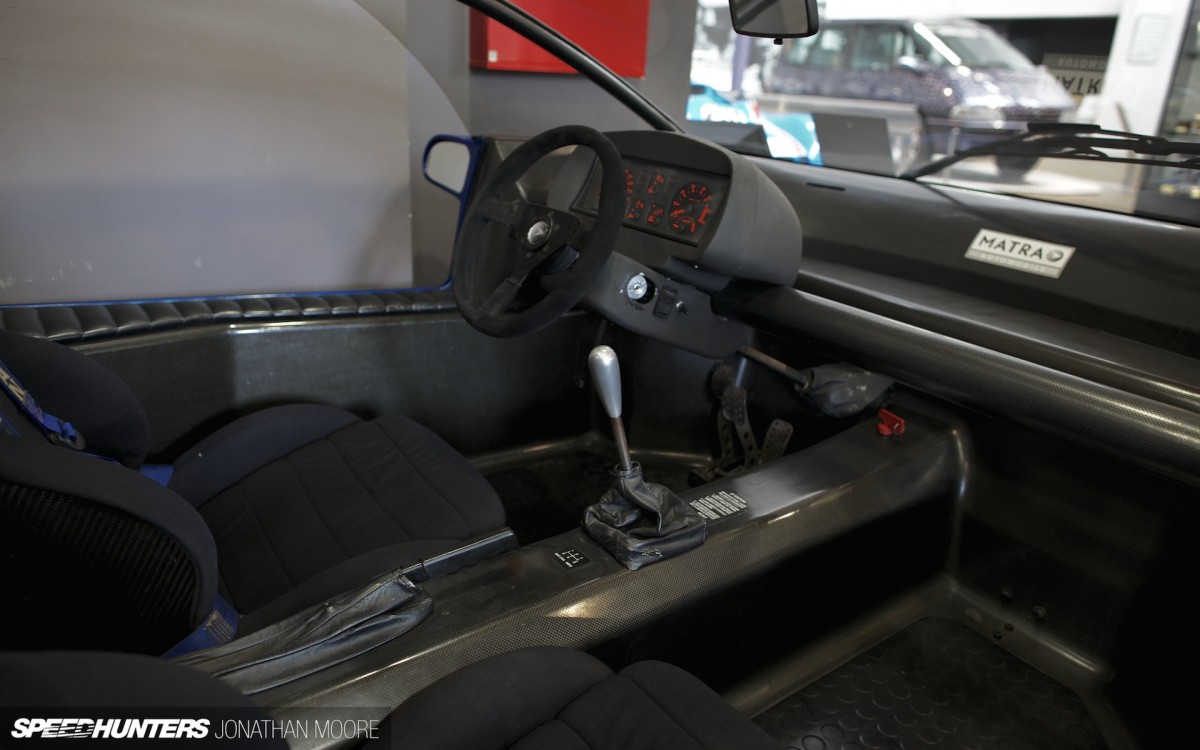
Special projects continued unabated. This was a side to Matra I really wasn’t familiar with: an entire secret projects department who seem to have evidence of beating pretty much every modern innovation to market, years before any appeared in the mainstream. The problem was that they didn’t tell many people, and the ones they did tell weren’t particularly adventurous…
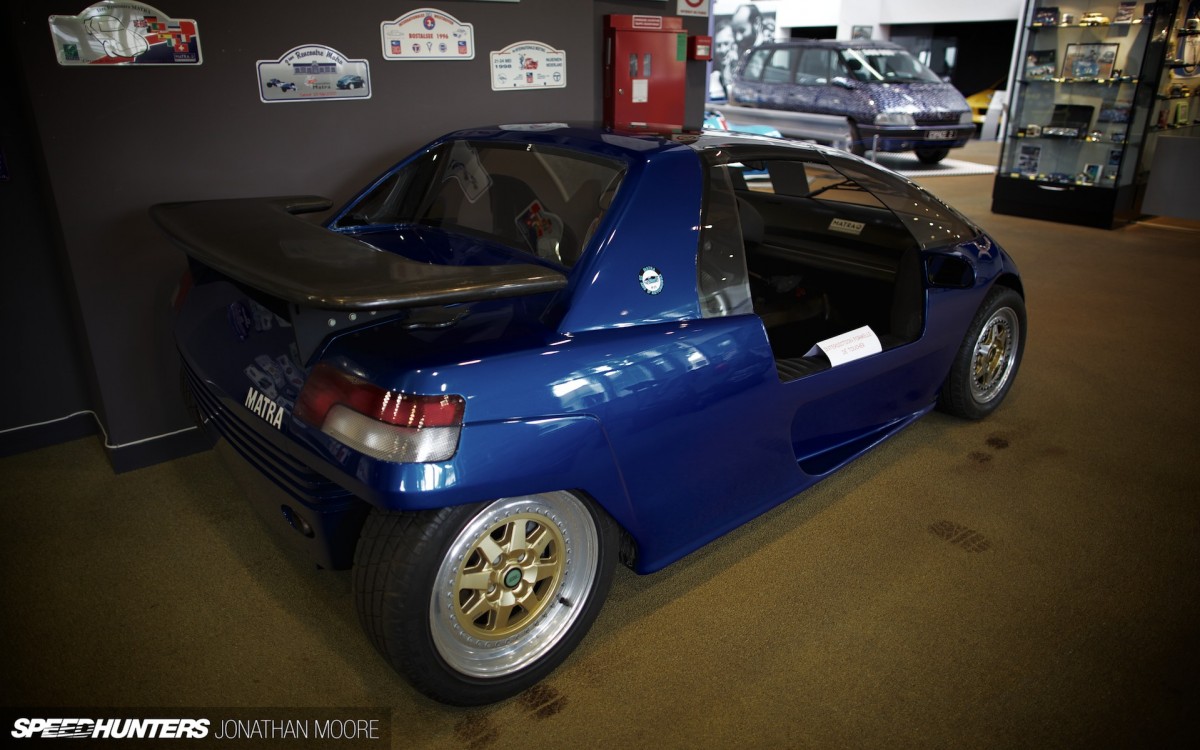
To get truly to the heart of what was going on inside the head of Matra in the ’90s, it was time to descend to… *the secret basement*. There were hints of what was in store from what was displayed in the foyer. The 1989 Matra P25 concept car was showing off its carbon-kevlar construction. 650kg and a turbo-charged Renault engine made the P25 as fast as a Testarossa and as light as an F1 car…
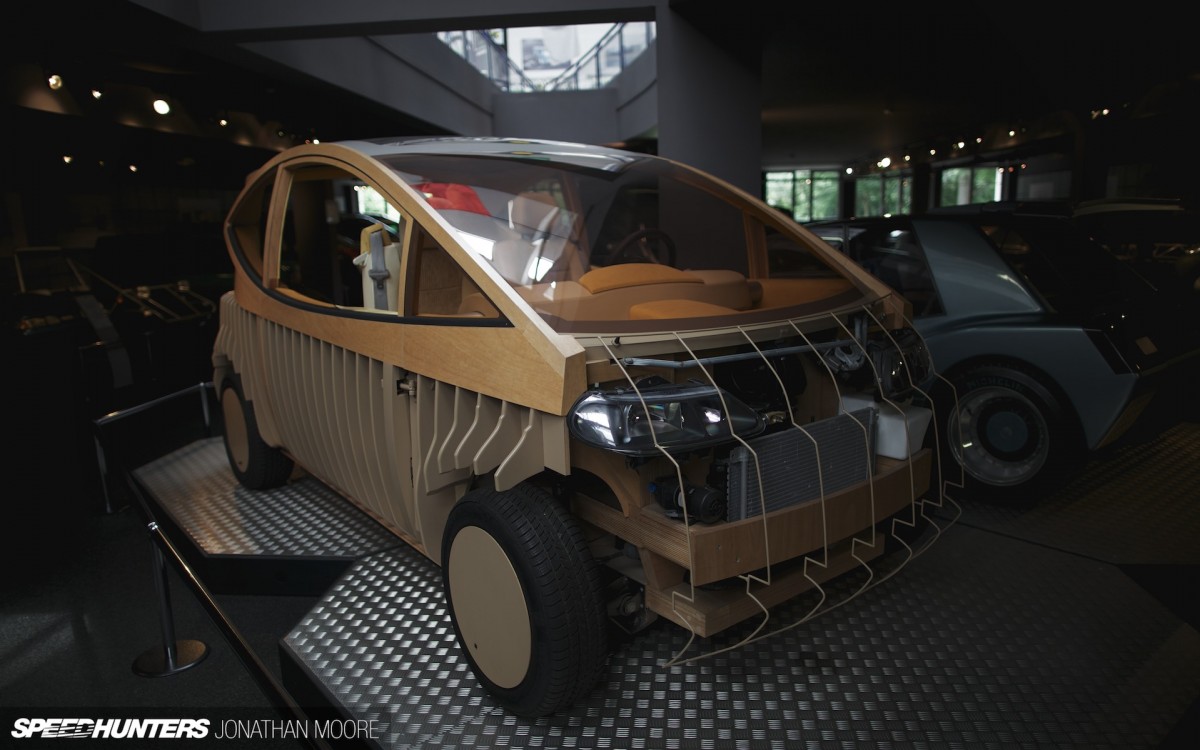
Downstairs was an Aladdin’s Cave, a peak into the automotive drawer marked Top Secret. Amongst the wood and clay prototype concepts was a car that would have become the 205 had the Peugeot partnership not ended, an electric town car that scissored up to be shorter for parking, a three-litre GT version of an Espace and more.

That the Bagheera was underpowered wasn’t unknown to Matra at the time, but more a result of what was available from the Simca range. So, Matra took two four-cylinder units and stuck them together to make a U8 for this 1974 prototype, which unfortunately didn’t make it into production – another victim of the mid-’70s oil crisis.
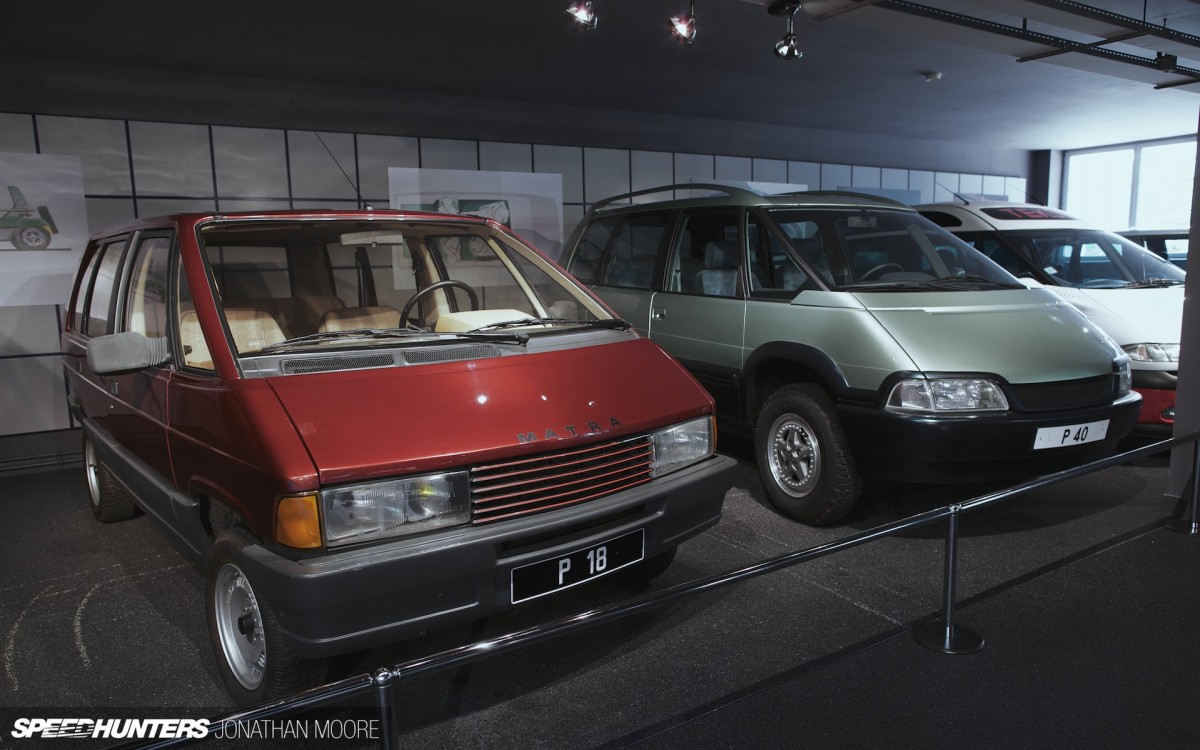
This is the original Espace ‘Monospace’ P18 concept presented first to Peugeot and then to Renault; to its right is a 4×4 prototype – an SUV a decade before the SUV…
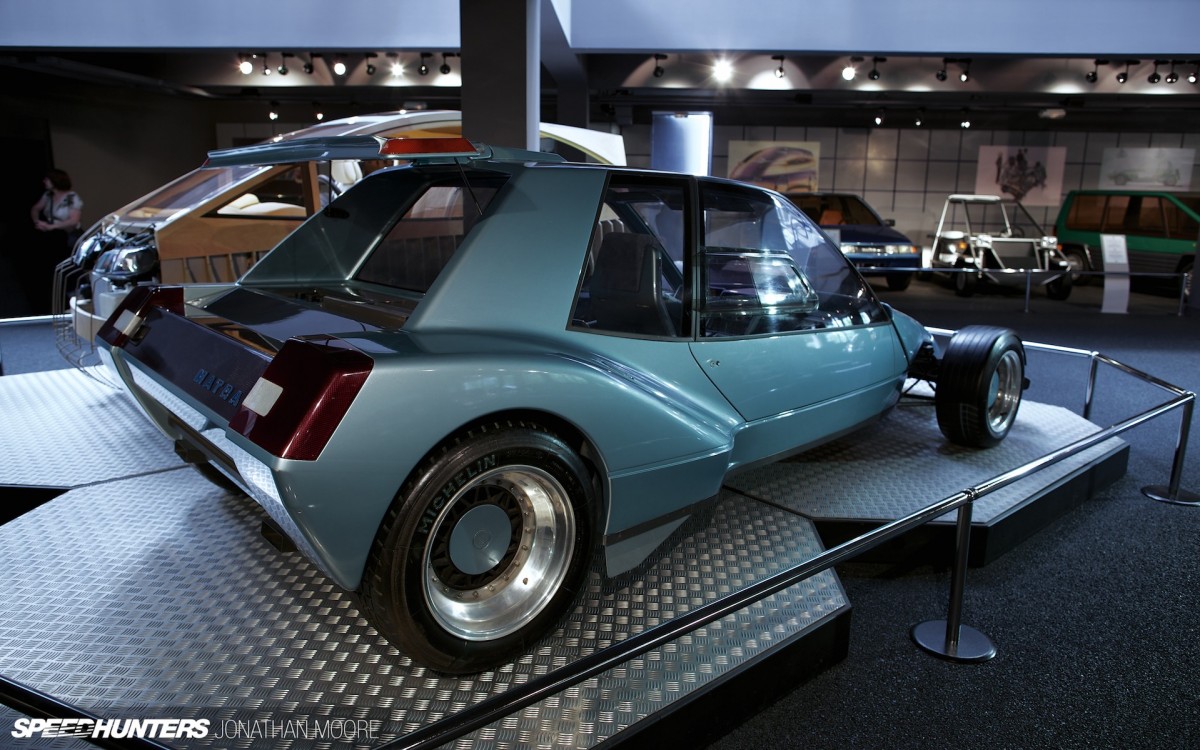
Most interesting was the P29 concept from 1986, which showed off a whole raft of technology being developed at Matra. A mobile laboratory, the P29 was a two-seater with a mid-mounted, supercharged four-cylinder hiding in the rear.
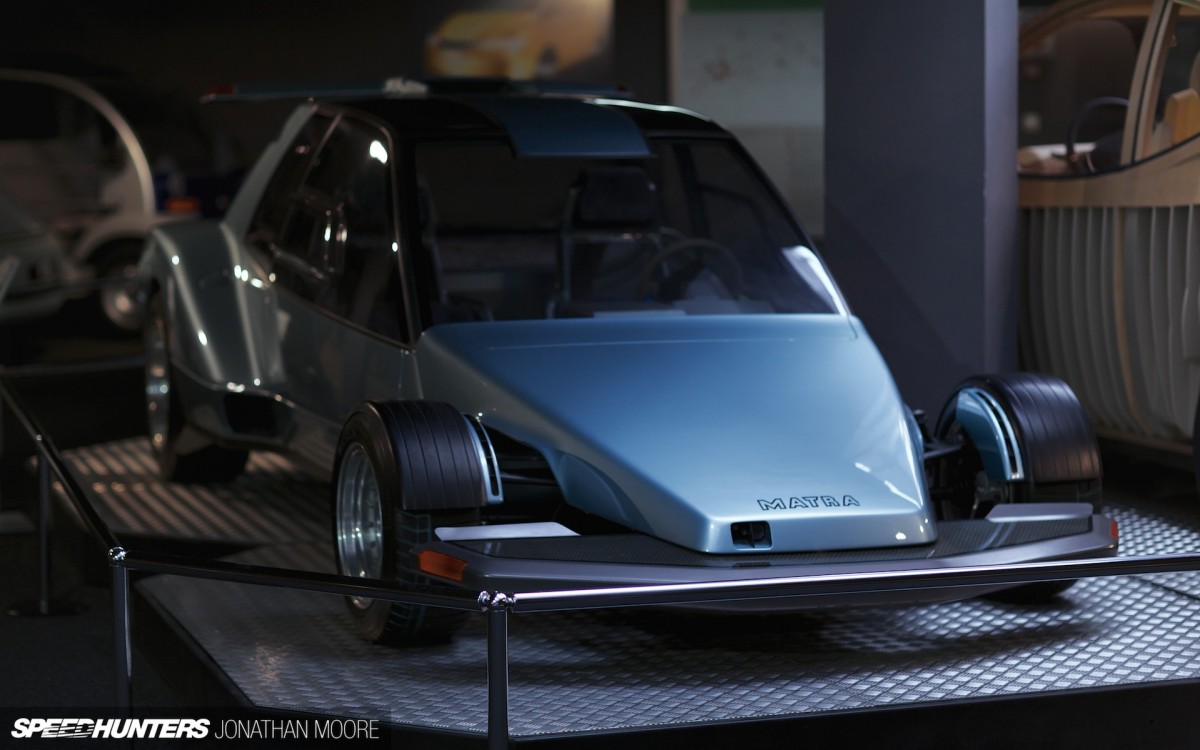
The outside might not be pretty, but if the F1 nose and matching dynamic rear wing, along with exposed front suspension, doesn’t grab you then the five second 0-60mph time might.
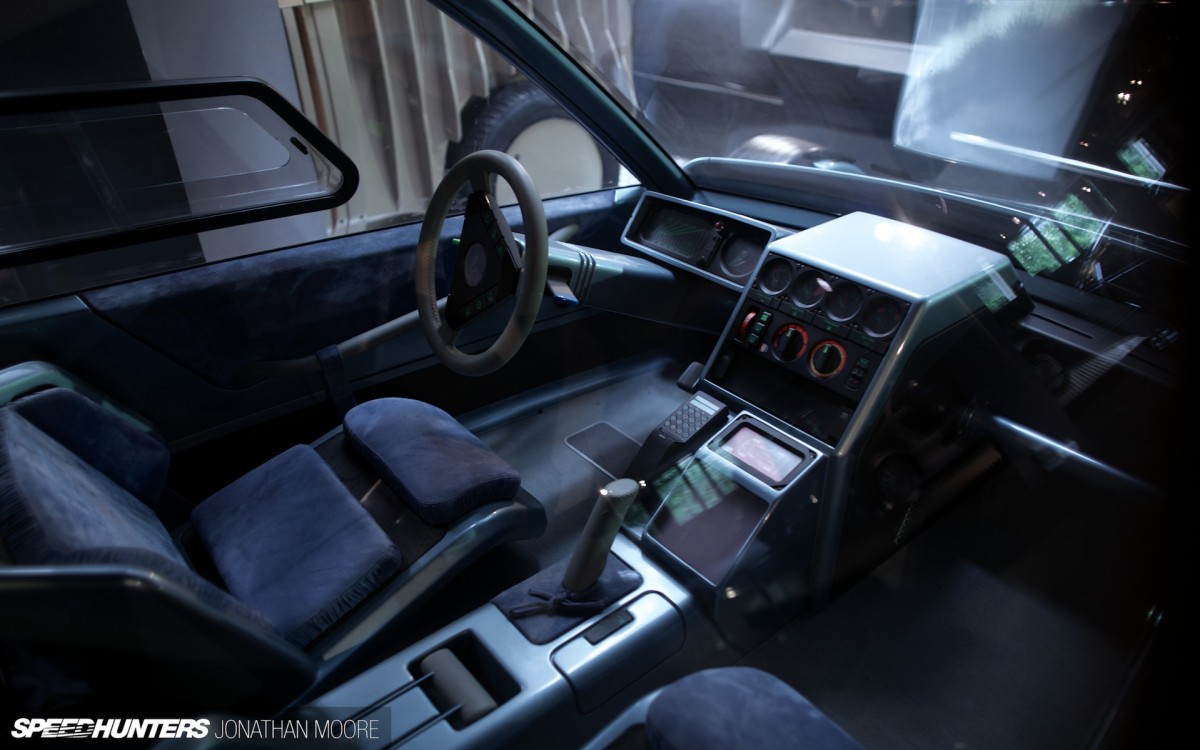
The chassis was aluminium honeycomb, and on the inside you could find GPS, weather radar, a rear-view camera, mobile phone and more.
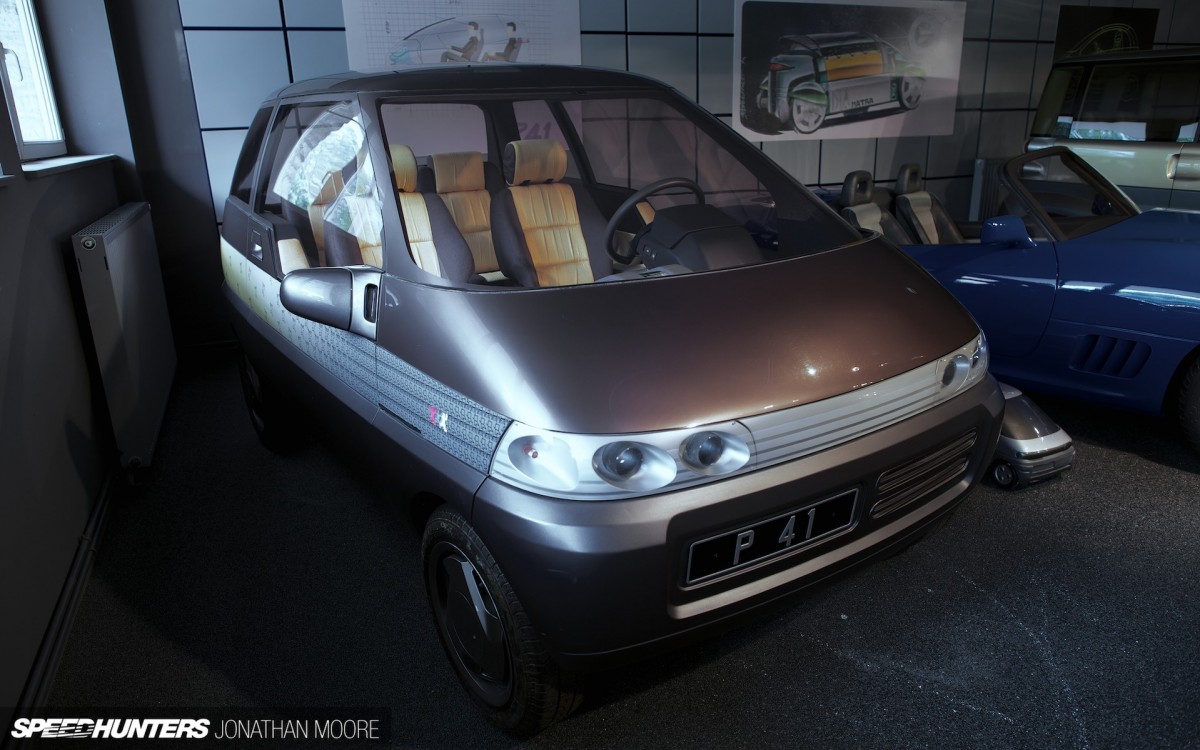
1990’s P41 featured a panoramic roof and rotating seats with modular interior: it would later be used as a basis for the Twingo.
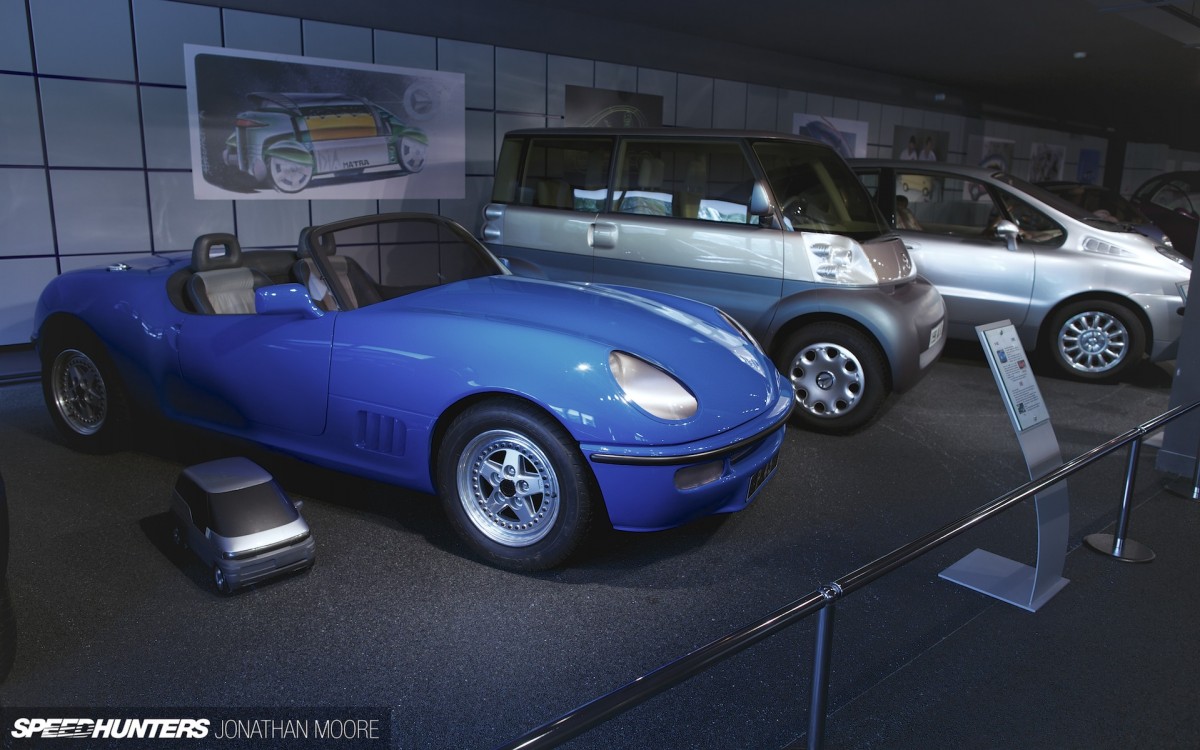
Had the P43 come to market just a year earlier, could we be talking about Matra rather than Mazda as the kings of affordable, rear-wheel drive, two-seater fun? Beaten to production, the P43 was abandoned.
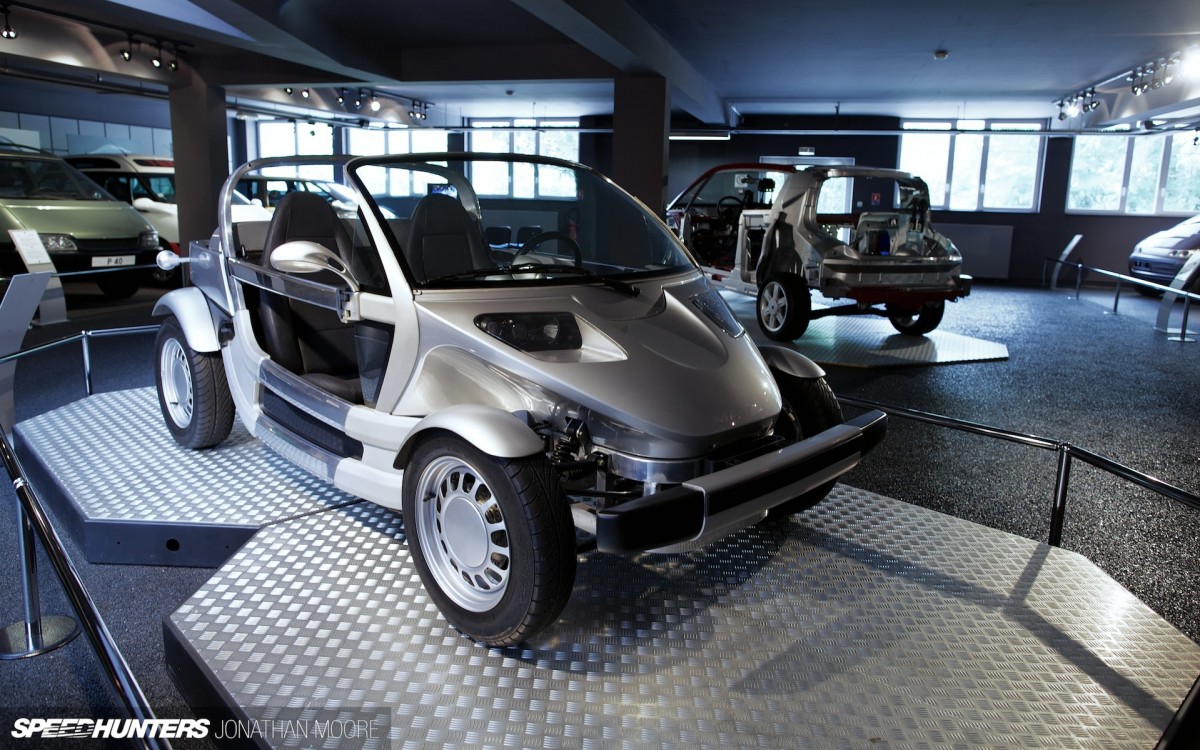
The M72 lightweight two-seater from 2000 was one of the final concepts to emerge from Matra. With a motorcycle engine at its heart, which meant it could be driven by 16 year olds, I think this looks pretty funky, and definitely more pleasing than a lot of modern city concepts…
But in 2003 it all came to an end. Matra’s manufacturing base at Romorantin was closed down as the last Espaces and Aventines rolled off the line. It ended the company’s time in both Romorantin and the automotive world, and it’s left the world a poorer place.






WOW! What a cool place, wouldn't mind a wander round. But what can I say about the Espace F1 other that WOW!! Would love to hear the sound of that thing!!
Grah, that P29's interior is amazing. This was an unexpectedly good article, well done! I've always loved the Murena. Matra was definitely ahead of their time, now that you point it out.
The french make some pretty amazing cars. Overlooked! More coverage!
I thought I saw the Espace F1 in the background of Jonathan's previous post. I remember coming across this video many years ago and being blown away! PVGUK Enjoy!
http://www.youtube.com/watch?v=hdTEy3sVqhw
I've always known Matra from F1 and Le Man, but never knew they worked with other manufactures. The Espace alone was surprising to me. I find it odd that they can make a car as good looking as the MS670, but then have street cars that were kind of odd. And although they're gone, they can still claim that the've won Le Mans and the F1 Championship, so all in all they'll always have that to show off.
Awesome! Too bad the company had to fold =[
I remember seeing the Espace F1 at Silverstone that year. It lapped quicker than every car except the F1 cars (off the top of my head that includes F3, F3000 and Porsche Super Cup). Unreal.
What isn't mentioned is that the majority of the chassis, the brakes, and the whole of the suspension setup was also stolen off the Williams F1 car.
thanks for all Matracians ! nice and complete coverage ! if someone is interested, more information on show car, concerning P25, it was to celebrate the 25th anniversary of Matra, the engine is based on 1.8 l 16V of the Clio Williams developing 250 hp with the addition of a turbo and helped by a R11 Turbo GrA gearbox, I drove it one time and it was really surprising. For Espace F1, build to celebrate the 10th anniversary of Renault/Matra agreement around the Renault Espace, the front end came from Venturi 600LM, the rear end is 100% Williams and the carbon brake system was from a Peugeot 905 (LM prototype).
For more pics and info on the Rancho-

http://www.thepetrolstop.com/2010/06/talbotmantra-rancho.html
and I recently had the chance to see a Murena, awesome 3 seater car-
http://www.thepetrolstop.com/2013/05/talbot-matra-murena.html
FB1968 Excellent extra info there, thanks! I didn't know about the Venturi/905 parts being used... Incredible!
@zz They certainly do... Too often overlooked. But then, the French did pretty much invent motoring...
MidshipR Cheers! It's pretty interesting, isn't it?
PVGUK It's well worth a visit, and it's a lovely part of France! Check out the video posted in the comments above for a taste of the Espace F1...
ScuderiaBenny PVGUK That's an amazing video! The images and sound just don't go together... my brain can't process it!
I would say a murena is good!? My brother has had 2 of them: A normal Murena and a Murena S. They really drive horrible. The body roll's and pitches way to much. It's really a sheep in wolves clothing. The shifter is almost underneith you leg if driving alone. With 3 people in the car you can't make a shift without touching someone and pushing them aside. To me it's just an epic fail....
You hardly see any of the Matra's in the U.S. unless they are in a show or a collection.
Another amazing vehicle sharing the same kind of genes :
http://www.youtube.com/watch?v=b0cVFIk0_EE
Kind of thing brain cannot process indeed ^^
Enjoy!
One of the masterminds behind Matra Automobile's most impressive prototypes/concepts (in the last 2 decades of its functioning) was undeniably Gerard Ducarouge, an ingenious engineer/designer/innovator/visioner - among other things, he was noted to have been main engineer in ohe of the Ayrton Senna's Renault-Turbo powered seasons (at the beginnings of Senna's career).
It would be delightful if we could hear more stories (interviews?) about the other men behind these truly ahead-of-time automotive thinking that took place in Matra Automobile throughout the years.
When looking at all those prototypes, it seems that many crucial automotive concepts were born in Romorantin, and perhaps spied / leaked away to more mainstream manufacturers. One thing is sure, they were one of the most innovative automotive companies ever, dominating F1 for several years in the 70s, and creating the best sounding V-12 engine ever, in the process :).
Truly great stuff - thanks SH !
YamaGema gimmie!!